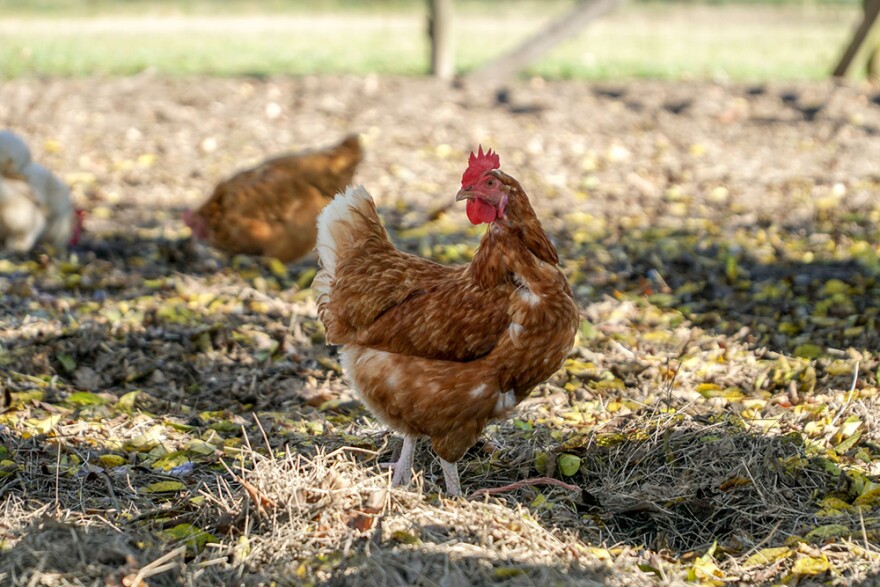Oklahoma became the 31st state with a confirmed case of avian flu in chickens over the weekend, and state agriculture officials are asking for help to contain the spread.
The infection was reported in Sequoyah County, which borders Arkansas, on Friday afternoon. The Oklahoma Department of Agriculture, Food and Forestry held a briefing Monday afternoon to discuss the disease and safety precautions they suggest for chicken raisers and producers.
Officials said transmission to humans is possible but unlikely, however the virus is highly transmissible and lethal among birds. To prevent widespread contamination, Oklahoma is temporarily banning chicken sales, exhibitions and swaps in an effort to contain any existing infections.
Dr. Alicia Gorczyca-Southerland, an assistant state veterinarian, said the outbreak is concerning because of the risk it poses to chicken producers statewide. Safety measures are intended to protect the state’s 3,700 farms that produce chickens. The virus can wipe out entire flocks. An outbreak in 2015, for example, led an Iowa farm to slaughter millions of chickens.
“It’s really important for everyone to understand that this is not a food safety risk,” she said. “Eggs and poultry products are still safe when cooked properly. Of course, we’re cooking our chicken properly just for other reasons; nobody wants salmonella.”
The flu is often spread by fecal matter from wild birds, especially in ponds and rivers, and can stay alive on surfaces for weeks.
Gorczyca-Southerland said large-scale chicken farms tend to already have biosecurity measures in place to prevent contamination, but smaller backyard raisers might not. She offered several pieces of advice:
- Have dedicated shoes and clothes for your coop area. Don’t wear boots that you’ve already worn to work, or to go hunting or fishing.
- Don’t share equipment, and be sure to clean any equipment you use.
- Always quarantine new birds.
- Keep poultry indoors or in coops this month, if possible.
She recommended blocking access to rivers and ponds. Other states have seen spread from ducks to chickens, she said, with ducks swimming on ponds and bringing the virus back to the coops they share with chickens.
In chickens, the signs of the disease are sudden death, gasping and discoloration. That discoloration occurs in the legs and in the comb, which is the red part on a chicken’s head. In people, the virus can cause cold and flu symptoms, as well as severe fatigue.
But, agriculture and health officials reiterated, human infection is rare.
“At this point in time, there’s only been one person who’s been known to be infected with this virus in the United States,” State Epidemiologist Jolianne Stone said during the briefing.
She said, although the risk is low, the State Department of Health is working with agriculture officials to identify anyone who might have been exposed to the virus and urging them to call a helpline that state epidemiologists offer. That phone number is 405-426-8710.
For more information, you can head to ag.ok.gov or call 2-1-1.







